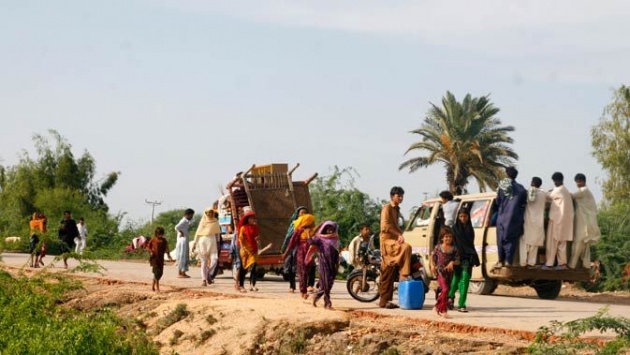
Transportation in Pakistan (Urdu: پاکِستان نقل و حمل) is extensive and varied and serving a population of over 191 million people. Construction of new airports, roads, and railway lines have led to an employment boost in the country. Much of Pakistan's rail network railway was built before 1947, mainly during the British Raj. In recent years, new national highways have been built, with the addition of motorways which have accelerated trade and logistics within the country. Airports and seaports have been built in the last 30 years with the addition of foreign and domestic funding.
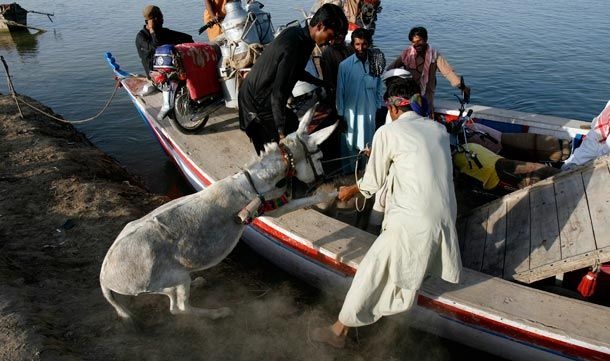
Local urban transport[edit]
In urban areas there are several means of transport available, catering to a wide range of budgets.
Rapid Transit[edit]
Main article: List of rapid transit systems in Pakistan
Monorail
The government of Pakistan has planned to build a monorail system in its federal capital, Islamabad. Monorail is also planned for New Avenue in Gulberg, Lahore
Metro rail
The Lahore Metro or Lahore Rapid Mass Transit System (LRMTS) (Urdu: لاہور میٹرو) is an under construction rapid transit system (metro train system) for Lahore, the second largest city of Pakistan. First proposed in 1991, funding was not secured, and in 2012 it was abandoned by the Punjab government in favour of the more cost–effective Lahore Metro Bus System which opened in February 2013. However, the Punjab Government decided to restart development on the Lahore Metro as a $1.6 billion project with Chinese assistance. The Orange Line, which will be 27.1-kilometre (16.8 mi) long (25.4 kilometres (15.8 mi) of which will be elevated),[1] will be the first line of the project and is under construction.[2]
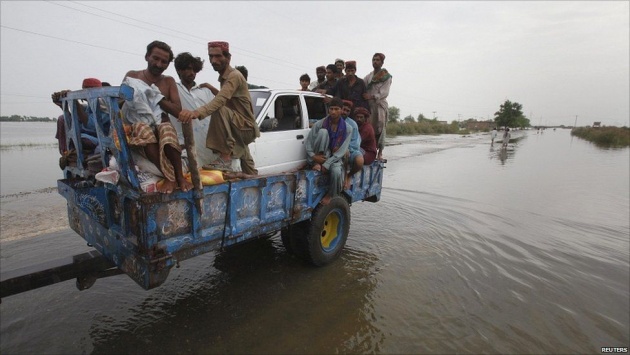
Without segregated lanes
TransLahore: It is a BRT system in Lahore. Lahore Transport Company was established in 1984 to ease the traffic conditions of Lahore and improve bus services. LTC got all the transport responsibilities of traveling in Lahore in December 2001. A BRTS fleet of 650 Buses was introduced. It was named as TransLahore. However, the BRTS did not have dedicated lanes and had to share roads with regular traffic with no right of way privileges. This resulted in a system that was a BRTS only in name.
With segregated lanes
Lahore: Metrobus (Lahore) Bus Service was inaugurated on Feb 10, 2013 by CM Punjab Shehbaz Sharif.[3] It consist of 27-kilometres long road track for the Metro Bus Service, from Gajumata to Shahadra, out of this track 8.5 km is elevated. It has 27 bus stations and e-ticketing and Intelligent Transportation System are part of the MBS.
Islamabad-Rawalpindi: Rawalpindi-Islamabad Metrobus Service is an operational bus rapid transit system which connects key areas in city of Rawalpindi and the national capital city of Islamabad. It is 24 kilometres (15 mi) long, and has 24 stations. The project was inaugurated on 4 June 2015 by Prime Minister Nawaz Sharif.[4]
Under construction
Multan Metrobus is under construction in the city of Multan. The 18.2 kilometres (11.3 mi) long BRT system will connect main commercial areas of the city.
Planned
Karachi Metrobus is planned for city of Karachi. It will consist of 5 corridors and will have total length of about 109 kilometres (68 mi), of which the Green and Red Linea are about to go into a construction phase.
The corridors include:
Surjani Town to Jama Cloth Market (21.1 km)
Model Colony to Regal Chowk (24.4 km)
Landhi to Luck Star Hotel (20.4 km)
Baldia to Shershah via Hub River Road (9.7 km)
Hwaksbay to Gulbai via Mauripur (11.8 km)
Orangi to Board Office (3.9 km).
Peshawar Metrobus is a bus rapid transit system for the city of Peshawar. The project is under the consideration of PTI led Government of Khyber Pakhtunkhwa. PMTS will be a bus rapid transit system.Which will be initially constructed on one red line having length of 18.4 kilometer from Chamkani to Hayatabad area of Peshawar.
Faisalabad: Faisalabad Metrobus is a planned, single line BRT System, similar to Lahore Bus Rapid Transit System. Metro line will connect Faisalabad International Airport to City Bus Terminal, passing through main hubs of the city. Construction is expected to start at the end of 2015.
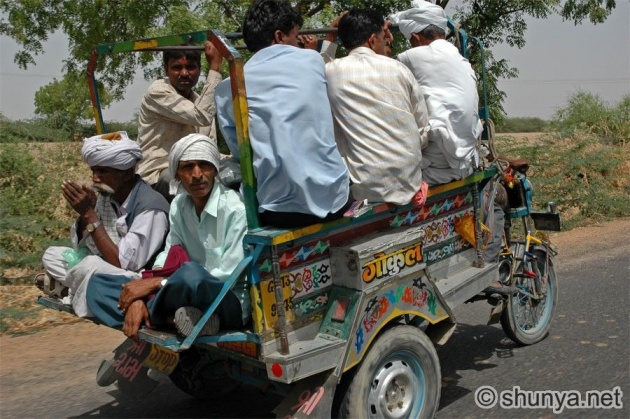
Buses[edit]
Main article: Daewoo Express
See also: Buses in Pakistan and List of bus routes in Lahore
Within cities, buses provide a significant role in commuting a large number of travellers from one city to another. Recently, large CNG busses have been put onto the streets of various cities, primarily Karachi and Lahore, and recently Islamabad, as the minivans which were originally used were beginning to cause large traffic problems. Private yellow and white minivans have services throughout cities in Pakistan and get commuters from one point of the city to the other at a low cost. Since 2000, however, the government has taken a comprehensive initiative to modernize the existing bus fleets and minimally impact the environment. This public-private enterprise would gradually introduce 8,000 CNG buses throughout the country and 800 buses in Karachi. This venture will ensure high standards of efficiency and cleanliness.[5]
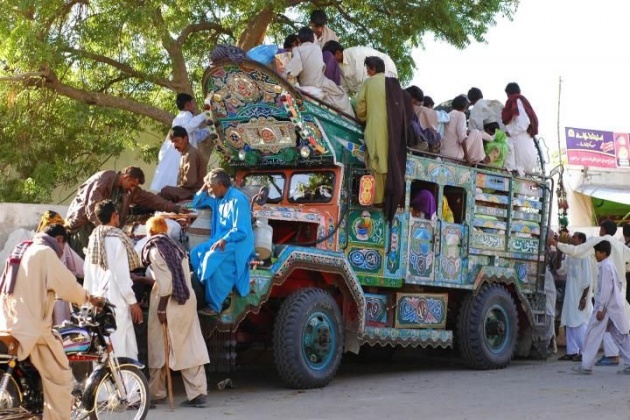
Urban Railway[edit]
The Karachi Circular Railway, which opened in the early 1940s, is the earliest functioning Mass Transit System in Pakistan. In 1976, Karachi was slated to begin work on an underground metro system, but plans have been put on hold since.
In Lahore, Lahore Central Railway Station is the main railway station. Shahdara Bagh, Badami Bagh, Mughalpura, Shahdara Town, Lahore Cantonment, Wagah, Walton Cantonment, Kot Lakhpat, Kahna Nau, Jia Bagga and Raiwind are other busy railway stations located in Lahore. These urban railway stations of the city are served by commuter trains of Lahore. A large number of commuters use these station to get access to the city of Lahore.

Taxis[edit]
Another very common sight seen mainly at hotels and airports are yellow taxis. Drivers charge according to a meter located on the dashboard of the car, but fares can be negotiated if there is no meter. The cab drivers are reliable and will take passengers to any destination required.
There are also numerous privately run services that use cars and minibuses of various types throughout Pakistan, providing a reliable and quick means of transport. Recently, the Radio Cab was introduced in Pakistan, which allows riders to call a toll-free number to get in touch with the closest taxi stand. This service is currently offered in Islamabad, Rawalpindi, Karachi, Peshawar and Lahore. Services for Hyderabad and Faisalabad are now being made.
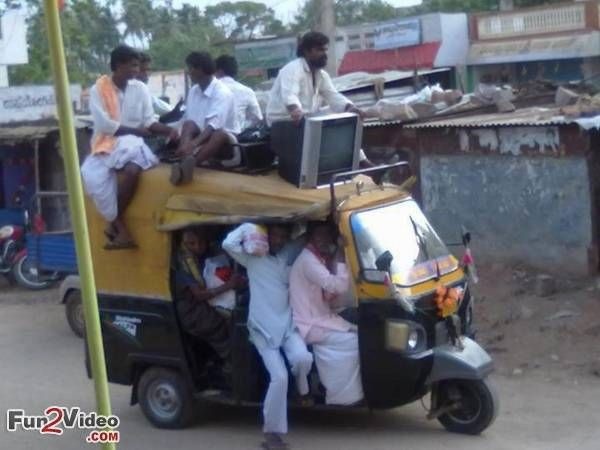
Auto rickshaws[edit]
Due to increasing environmental no issues with older rickshaws, the government has heavily invested in greener, more fuel-efficient rickshaws
Cars and auto-rickshaws are some of the most common means to travel within a city
A peter engine rickshaw in Gujrat District.
Auto rickshaws are a popular method of travelling in cities and are found in almost every city and town in Pakistan. The fare is usually negotiable before commencing a journey; however, due to the level of pollution contributed by auto-rickshaws, the government has recently begun banning older ones and replacing them with CNG auto rickshaws, which tend to be less noisy, form less pollutants and are much bigger and more comfortable. The Punjab government decided in 2005 to replace two-stroke three-wheelers with CNG-fitted four-stroke rickshaws in Lahore, Multan,Faisalabad, Rawalpindi and Gujranwala. Three manufacturers were ordered to produce 60,000 four-stroke vehicles, but they reportedly supplied 2,000 to the government which are now plying on city roads. Similar ordinances are now being considered in other provinces of Pakistan.
A new form of transport in Pakistan is the Qing-Qi (pronounced "ching-chee"), which is a cross between a motorcycle and auto-rickshaw. It runs just like a motorcycle but has three wheels instead of two and can carries a much heavier load. It is an urban transport vehicle and is used mostly for short distances.

Cars[edit]
Over the years, the number of cars on Pakistani roads has tripled. Traffic jams are a common scene in major cities across Pakistan. The most popular cars on Pakistani roads are Suzuki Mehran, Suzuki Cultus, Suzuki Alto, Suzuki Bolan, Daihatsu Coure,Hyundai Santro, Honda Civic, Honda City, Honda Accord, Toyota Corolla and Toyota Vitz.
In late 2005, Suzuki introduced the APV (All-Purpose Vehicle), the first luxury family van in Pakistan. Utility vehicles (SUVs or 4x4s) are also a familiar sight in Pakistan. This type of car is very multi-functional as it allows long distance and off-road travel, within cities as well as city-to-city travel. Luxury SUVs are owned by the elite in urban cities and by large landowners in the villages and rural areas, thus making them a fairly common sight in Pakistan. The most popular models are the Toyota Land Cruiser, Toyota Prado, Land Rover Range Rover, several Mercedes, BMW and Audis. Adam Revo, Pakistan's first manufactured car, was developed to meet the needs of low income families.
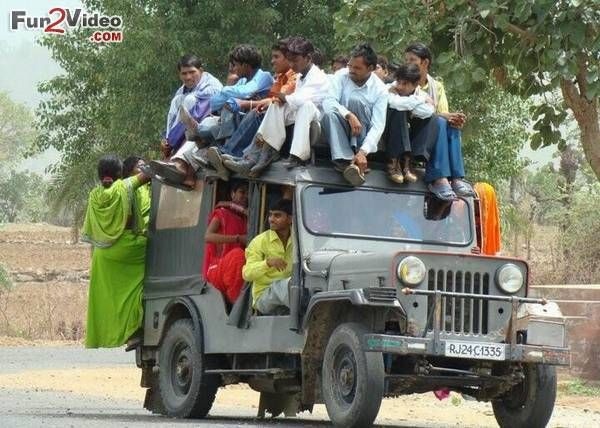
Future cars[edit]
To meet future needs, students and teachers from National University of Science and Technology developed Pakistan's first ever hybrid gasoline car Devrim II, an inspiration from Turkish model Devrim.[6] Before that, students from Naval College Karachi and Ghulam Ishaq Khan Institute also made a successful hybrid car, but Devrim II is the most effective one. The current team leader of the Pak-Wheelers said,[7]
"Initial design was giving a mileage of around 450 kilometres to a litre but we are trying to improve that number to more than 700 km/litre after switching to a hybrid model."
— Faizan Zafar, Tribune interview
Traditional[edit]
In the small towns and farms, many people decide to walk great distances to either get to work or to walk to their nearest grocery store to get their daily shopping. The donkey cart, locally known as the Rehrri, is still visible every where in Pakistan, as poor people use this form of transport to shift cargo from one part of the city to the next. Their cargo ranges from fruits and vegetables, to textiles or machinery that factories require in industrial cities. The horse and carriage, locally known asTaanga, is mainly used for casual travelling around the city. There is one driver, with either one or two horses at the front. This method is now usually used by tourists in the spring and summer that love to see the cities in an open environment.
Camel carts are also seen from time to time, mostly in the hotter parts of Pakistan including Sindh, Punjab and Balochistanwhere farmers transport larger cargo that donkey carts cannot handle.
Bicycles are used by either the poorer segment of the society or for leisure. This method is still very widely used as its very economical and simple.
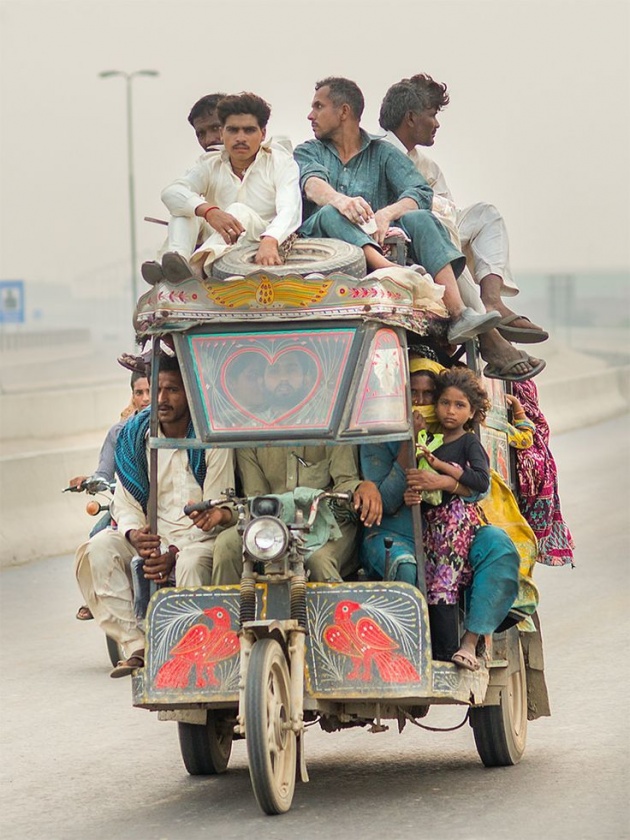
Domestic[edit]
Rail services in Pakistan are provided by the state-run Pakistan Railways, under the supervision of the Ministry of Railways. Pakistan Railways provides an important mode of transportation in Pakistan, catering to the large-scale movement of people and freight. The railway network comprises 8,163 km[8] of which 5 ft 6 in (1,676 mm) forms 7,718 km, including 293 km of electrified track. 1,000 mm (3 ft 3 3⁄8 in)metre gauge tracks form the remaining 445 km. Passenger earnings comprise 50% of the total revenue. During 1999–2000 this amounted to Rs. 4.8 billion.[citation needed]Pakistan Railways carry 65 million passengers annually and daily operate 228 mail, express and passenger trains.[citation needed] Pakistan Railways also operate special trains for various occasions. The Freight Business Unit with 12000 personnel operates over 200 freight stations on the railway network. The FBU serves the Port of Karachi and Port Qasim as well as in various other stations along the network and generates revenue from the movement of agricultural, industrial and imported products such as wheat, coal, fertilizer, cement, and sugar. About 39% of the revenue is generated from the transportation of petroleum, 19% from imported wheat, fertilizer and rock phosphate. The remaining 42% is earned from domestic traffic.[citation needed] The freight rates structure is based on market trends in road transport which is the main competitor to rail transport.
High speed rail[edit]
Prime Minister Nawaz Sharif said that a high-speed rail network will be built which will connect Peshawar to Karachi via all major cities of Pakistan during his visit to Chinain June 2013.. Government is making plans for this project.



